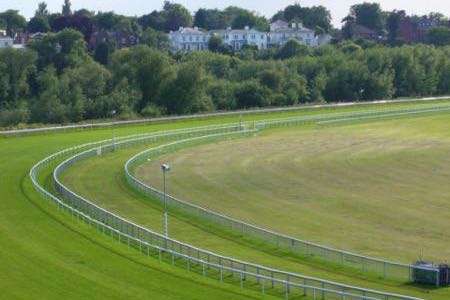
Horse racing is one of the oldest sports in the world, having been practiced since ancient times by virtually all civilisations. In the United Kingdom, the sport became truly established in the 18th century, continuing to grow in popularity in the years that followed. As an example, Newmarket came into prominence thanks to the patronage of King Charles II, whilst the Jockey Club was formed in 1750.
The Epsom Derby, one of the English Classics, was created in 1780, with the St Leger starting four years before that. It goes without saying, therefore, that classic races required decent racecourses to be run on. Some of those racecourses still exist today, though it’s entirely fair to point out that they would be virtually unrecognisable in their modern form to people who stood on them when they first opened their doors.
A list of the oldest racecourses in the world would be populated by countless British courses, such is the country’s relationship with the sport. Indeed, there are very few racecourses outside of the United Kingdom that are as old as the ones that our small nation has to offer. That, of course, is the benefit of practically inventing the sport in its modern form. Here’s a look at some of those courses.
Chester Racecourse
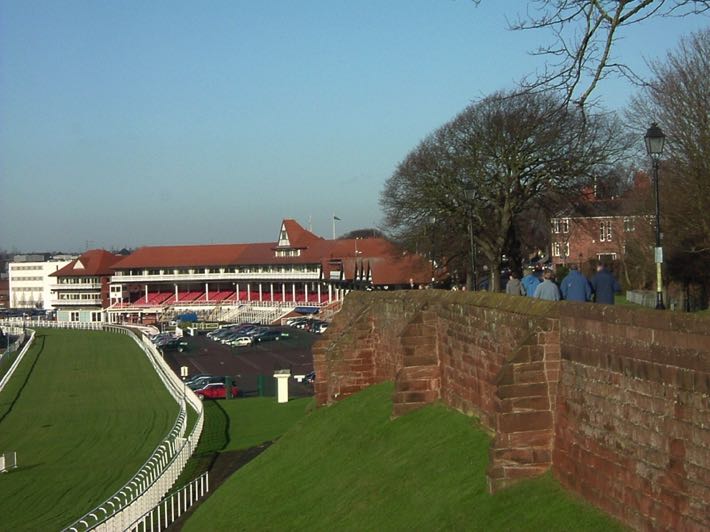
Officially considered to be the oldest racecourse in the United Kingdom, if not the world. It was first used in 1539, though the first grandstand for spectators wasn’t built for nearly 300 years. That was erected in 1817, coming seven years before the Tradesmen Cup, which was renamed as the Chester Cup and is still competed over today. The racecourse stands within the walls of the city and is known as the Roodee.
The 65-acre course can be found on the banks of the River Dee, a location that once harboured a Roman settlement. That closed as the river began to silt up, which is why a racecourse could be built there at all. Close to the centre of the in-field is a mound, upon which is a small cross that is known as a ‘rood’, lending the racecourse its nickname. The course was home to the Chester Midsummer Watch Parade, which was abolished in 1677.
The fact that the eastern part of the course abuts directly with the Roman city walls means that it’s one of only a few places in the country where spectators can watch the racing for free on race days. In fact, the walls offer a clear view of the entire circuit, making it even better than the grandstands. The south-eastern corner of the course runs under the Grosvenor Bridge, which was the longest single-arch bridge in the world when built.
First Recorded Race
The first recorded horse race at Chester Racecourse took place on the 9th of February 1539, with horse racing being used as a replacement for the violent Goteddsday football match that used to take place there. The Mayor of Chester, Henry Gee, gave his consent to the horse racing and is widely credited with the use of the term ‘gee-gees’ to describe horses. Races took place on Goteddsday until 1609.
Goteddsday is better known in the modern era as Shrove Tuesday and was replaced in 1609 by St George’s Day as a day for racing. Both of them were major days for racing in medieval times and horses that won races were awarded the Chester Bells, a set of bells that were designed to decorate the horse’s bridles. The major meeting was extended to a four day one in 1745, with a single race each day.
Whilst racing had taken place at Chester Racecourse for hundreds of years by 1817, it took place on a simple open field. The decision to open a grandstand was one that saw it alter to being a far more structured affair. Even then, though, people could enter for free and it took until 1897 for the first admittance fee to be charged. Obviously the grandstand has been re-built several times since then, most notable in 1985.
Salisbury Racecourse
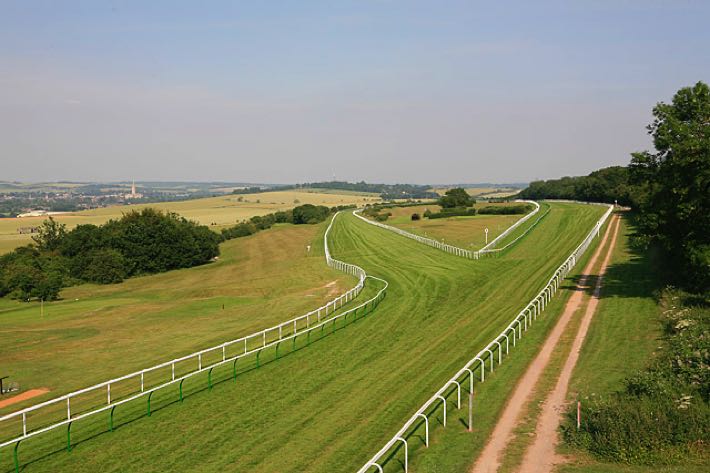
If one racecourse could rival Chester’s claim as being the oldest in the world, then it is Salisbury Racecourse in Wiltshire. Located just three-miles from Salisbury itself, the racecourse first hosted racing in the middle of the 16th century, though the exact date is unknown. That’s why it is that Chester Racecourse is considered to be the country’s oldest, because its opening is known with a degree of certainty.
That both courses welcome flat racing says a lot about the types of races that were popular during horse racing’s more formative years in Great Britain. Salisbury is perhaps better known for the calibre of horses that have taken part in races there rather than any other form of history. Gimcrack, who won 27 of 36 races over seven seasons, took part in races at Salisbury Racecourse, for example.
Notable Horses & Jockeys
Gimcrack’s run on the course in 1768 isn’t the only notable one, with the likes of Eclipse in 1769, Sun Chariot in 1941 and Mill Reef in 1970 are all well-known horses that have run on the Salisbury turf. In 2005, Sir Percy won at Salisbury before going on to win the Derby the following year, whilst Look Here won on the course in 2007 before winning the Oaks the year after.
It’s not just horses that have an association with Salisbury Racecourse either. In 1948, the much-loved jockey Lester Piggott rode for the first time at the course. Remarkably, he was just 12-years-old when he made his horse racing debut as an apprentice jockey, weighing just five stone. A famous American jockey named Steve Cauthen made his racing debut in Britain at Salisbury in 1979, winning on the back of Marquee Universal.
Salisbury Racecourse was also where Winston Churchill chose to race his horse Colonist II, running him in the one mile Upavon Stakes. He won, going on to win the more prestigious Ribblesdale Stakes at Ascot in the same year. In the modern era, about 16 meetings take place on the course each year, mainly between April and October. The majority of the races run at Salisbury are handicaps.
Doncaster Racecourse
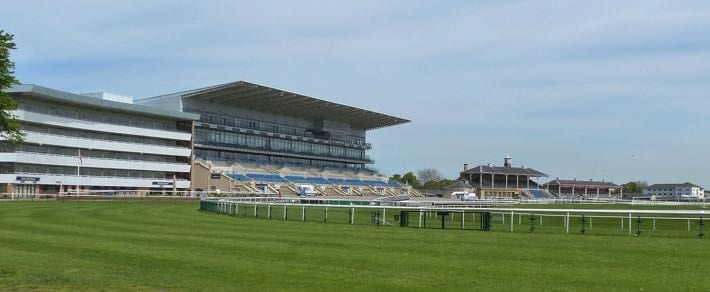
Whilst Chester and Salisbury Racecourses both lay very good claims to being older than Doncaster Racecourse, the fact that the latter course is the home of the English Classic St Leger means that it is arguably more prestigious than the other two. Doncaster is also one of Britain’s largest courses by physical capacity, meaning that it will always be considered to be a more influential venue than the others.
A map of Doncaster drawn up in 1595 shows a racecourse at Town Moor, suggesting that it was in operation even before then. Despite this, attempts were made to stop racing in Doncaster in 1600 on account of the number of ‘ruffians’ that were attracted to the meetings. By 1614, however, it was accepted that racing would continue in Doncaster and so a course was officially marked out.
The Doncaster Cup
The Doncaster Cup is the earliest race of any importance that took place at Doncaster Racecourse, with the first known outing of it taking place over Cantley Common in 1766. Nowadays, the race is the oldest continuing regulated horse race anywhere in the world and is part of British horse racing’s Stayers’ Triple Crown, running alongside the Goodwood Cup and the Ascot Gold Cup for long-distance horses.
Ten years after the Doncaster Cup was run, the racecourse moved to its current location and Colonel Anthony St Leger created a race in which five horses race. It would go onto become one of the English Classics, being the oldest classic horse race in the world. Doncaster Racecourse is where the flat racing season both starts and ends, with the prestigious St Leger Festival hosted here every September.
Courses That No Longer Exist
As well as boasting the above courses that are still operating, the United Kingdom is also home to a number of courses that are now sadly defunct. Information about when many of them opened is unknown, but some of them are known enough for us to be able to write about them in some detail here. The reality is that horse racing has taken place across Great Britain for hundreds of years, so precise course information isn’t always clear.
Lanark Racecourse
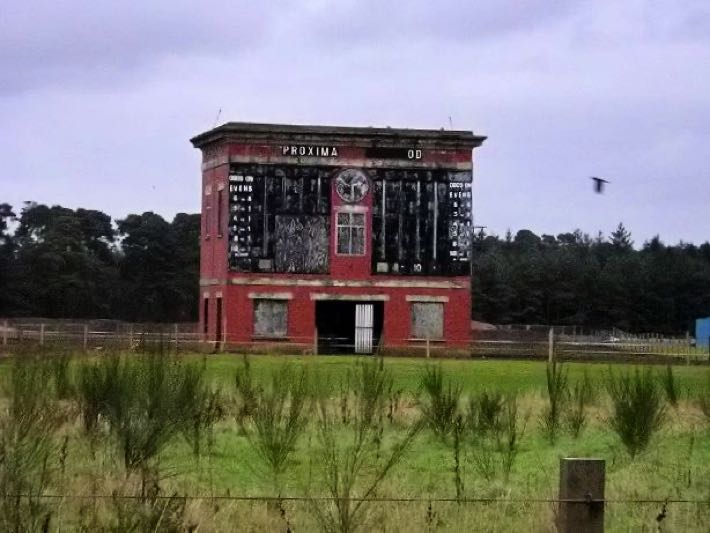
The Scottish town of Lanark is found about 30 miles from Edinburgh and was made a Royal Burgh by King David I in 1140. A racecourse was reputedly founded in the town by King William the Lion of Scotland at some point in the 12th century. A right-handed oval in layout, the course was ten furlongs in length and boasted a run-in of about three and a half furlongs.
The course was home to the oldest horse race in Britain, the Lanark Siver Bell, which was moved to Hamilton Park Racecourse about three decades after Lanark closed in 1977. The original silver bell that the race is named after was reported to have been a gift from William the Lion but sadly no longer exists. The course was also home to the longest handicap in flat racing, the William the Lion Handicap.
The course wasn’t just known as being the home of flat racing, either. Between the 6th and 13th of August 1910, Scotland’s first ever aviation meeting was hosted by the course, with the location being chosen because of its relative flatness. On top of that, the course also already had facilities to welcome a paying public and the stables were able to act as hangers, making it the ideal choice.
The decision to close the course was probably made on account of the fact that the racing held there was considered to be of a ‘modest’ quality and only attended by a handful of racegoers. That, somewhat inevitably, led to the course suffering from financial problems and that led to its ultimate closure. A trip to Lanark will allow those that know where they’re looking to see the remains of the course even today.
Manchester Racecourse
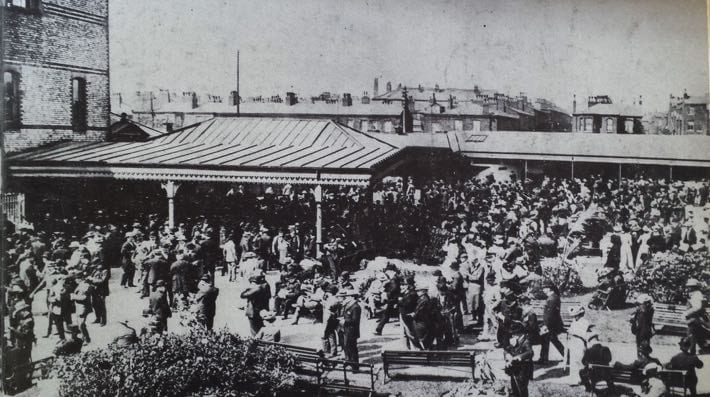
Whilst other courses might well have opened before Manchester Racecourse and closed since, but we know that racing was definitely hosted in Manchester in 1647. What makes the course an interesting one to talk about is that horse racing was hosted in numerous different venues around the Greater Manchester area rather than in one specific spot, which might have contributed to the lack of success of racing in the city.
Barlow Moor hosted racing in 1647 and then again between 1697 and 1701, for example, whilst Kersal Moor was the home of a horse racing meeting between the 2nd and 5th of May in 1687. One-off races or other short-lived events were also hosted at the likes of Heaton Park, Eccles and Stretford, with the latter being at the same venue that Old Trafford Cricket Ground now stands at.
Kersal Moor
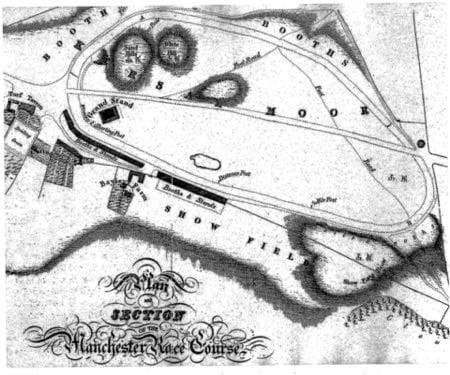
The main racing venue in the city was undoubtedly Kersal Moor, hosting racing fairly regularly between 1687 and 1847. It was an undulating course that was around a mile in circumference, running around three low hills. A grandstand was built there in 1777, with a ladies’ stand built three years later. By 1840, two meetings were hosted at the course on a regular basis, with the Whit races attracting more than 100,000 spectators.
When Kersal Moor closed in 1847, racing moved to Castle Irwell on the other side of the River Irwell. The course was a boggy one, on account of the fact that it was built in a meander of the river. Even so, a grandstand was erected and the entire course could be seen from it. Racing only lasted there until 1867 when the lease was allowed to expire ‘for just and Christian reasons’.
Racing then bounced around other locations in Manchester, such as New Barns, eventually returning to Castle Irwell in 1898, with the new course being inaugurated in 1902. It was well-served by trams and was close to Manchester city centre, meaning that it was popular at race meetings. Lester Piggott won the final ever race on the course, the Goodbye Consolation Plate, on the 9th of November 1963.